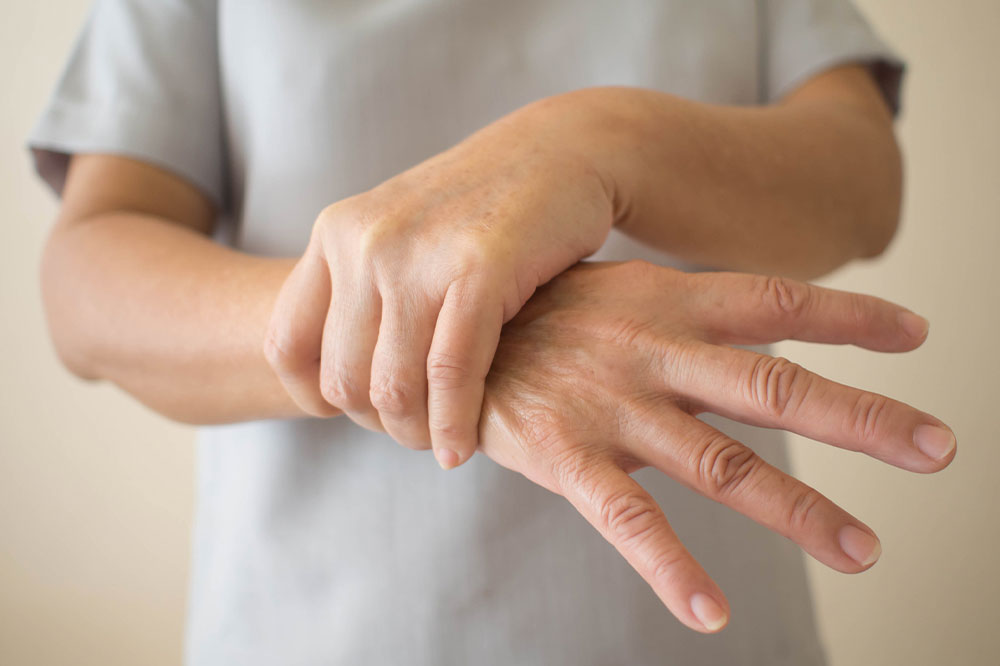8 Early and Noticeable Signs of Parkinson’s Disease

Parkinson’s, a severe neurological disorder affecting nearly a million people in our country, is characterized by a disruption of the electrical signals that travel from the brain to other body parts. Its severity can vary from person to person. While some lead normal lives with benign symptoms, others suffer serious discomforts that affect their functioning. Here are some early and noticeable signs of Parkinson’s disease that should not be overlooked.
Resting tremors
Tremors, or the rhythmic shaking of the hands, is the telltale sign of Parkinson’s. Resting tremors are the most common type of tremors, which develop suddenly when the hands are relaxed. They may develop immediately after completing a physical activity and worsen over time, affecting routine tasks like writing, shaving, picking up things, gripping objects, and other fine gross motor skills. This uncontrolled shaking is usually visible in one arm, but both arms can get affected in some cases. Moreover, the tremors may affect the legs in some patients. The intensity and severity of the symptom can vary from person to person.
Movement and reaction problems
The brain sends and receives signals that help a person gauge the surrounding space and react accordingly. However, Parkinson’s disrupts these signals, making the simplest movements like standing, balancing, and walking difficult. The condition also makes it hard to control the speed of movements. As a result, patients develop bradykinesia (slow movements) and hypokinesia (fast movements) with no overall control over their bodies. One may even start or stop a particular movement abruptly. Due to this symptom, patients need assistance crossing roads and performing routine tasks like bathing and eating.
A hunched posture
Parkinson’s initially affects one’s fine gross motor skills. However, as the condition progresses, it interferes with the patient’s balance and posture. The brain has a complex network of nerves that help a person sit or stand upright. When these nerves are damaged, patients develop a hunched or severely stopped-over posture. The worst part is that people may be unaware of their incorrect posture or, despite realizing it, be unable to sit upright. Sitting or standing in such an uncomfortable position continuously results in pain and stiffness, particularly in the neck and upper back region. Sometimes, severe Parkinson’s also affects the curvature of the spine, increasing the risk of falls and making it difficult to carry out some of the most basic tasks independently.
Changes in speech
The brain controls a person’s speech by sending and receiving signals to and from the voice box (larynx). Parkinson’s disease interferes with this function, leading to several changes in speech. A monotone voice with no variations in pitch is one of the early noticeable signs. Patients may also struggle with volume control as the ailment progress and speak softly, failing to convey their emotions. Further, the legibility of speech is affected, resulting in stuttering, slurring, mumbling, and an inability to complete sentences. Often, these changes in speech are combined with poor facial muscle control. Patients tend to react or respond with expressions completely irrelevant to the situation. These are evident signs of nerve damage triggered by Parkinson’s.
Changes in handwriting
Another evident early and noticeable sign of Parkinson’s is micrographia or changes in handwriting. When affected by the disease, one’s writing becomes cramped and small. Noticeable changes include the small size of the letters, reduced spacing, and close grouping of the alphabets and letters. These changes make it difficult for others to comprehend what is written. As the condition progresses and one develops tremors and stiffens of the hand muscles, even holding or gripping the pen becomes difficult, making one’s writing worse. Moreover, sudden bradykinesia and hypokinesia movements of the arm can make writing almost impossible in severe cases.
Compromised automatic movements
Specific movements, such as blinking, adjusting focus, smiling, swallowing, breathing, and swinging of the arms while walking, occur naturally without conscious effort. However, nerve damage caused by Parkinson’s makes it difficult for the body to carry out these natural reflexes. The changes are noticeable and can progress quickly if left unchecked. Therefore, individuals who notice these symptoms should visit a healthcare professional to determine the cause. Problems with automatic functions like breathing and swallowing can also be triggered by other health conditions, and they are not necessarily linked to Parkinson’s disease.
Emotional distress
Parkinson’s is a progressive condition that cannot be cured. When the diagnosis is confirmed, doctors recommend various treatments and changes in daily nutrition and lifestyle to control the symptoms. These measures are to be followed for an indefinite period, which can trigger emotional distress among patients. As the disorder progresses to the advanced stages, the risk of anxiety and depression increases. Doctors generally suggest therapy to help people cope with mental stress and learn how to live with the condition. Joining support groups for disease management is also a recommended practice.
Digestive problems
Parkinson’s leads to poor muscle control in different body parts. Poor muscle control in the pelvic region can trigger bladder incontinence, resulting in urine leakage. Similarly, weak muscle control in the digestive tract can make it difficult for a person to move their bowels normally, triggering constipation. If a person has no underlying digestive disorders, symptoms like urinary incontinence and constipation could be caused by a neurological problem like Parkinson’s.
The above are just a few early and noticeable signs of Parkinson’s. Besides these, the disorder can cause sleep problems. Poor muscle control and tremors can trigger restless leg syndrome, making it difficult for the body to rest, even at night. One might develop sleep disorders like insomnia due to lack of rest and, as a result, suffer from fatigue the following morning. Individuals who experience these signs should visit a healthcare professional for evaluation and guidance.






